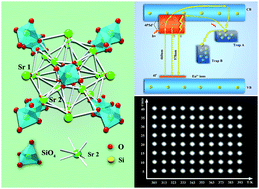Thermal quenching (TQ) seriously restricts the practical application of phosphor-converted light emitting diodes (LEDs), especially for high-power operation. More recently, considerable effort has been devoted to minimizing the emission loss with increasing temperature via the formation of defect levels; however, the specific compensation mechanism of carriers is poorly understood. Here, the commercial silicate phosphor Sr3SiO5:Eu2+ exhibiting zero-TQ is delicately developed by reconstructing the defect structure with the introduction of Tm3+ ions. The induced available deep traps are employed to trap carriers effectively, which inhibits energy loss in the form of phonons as a non-radiative process. Subsequently, the carriers released by thermal disturbance transfer energy to the activators of Eu2+, compensating the luminous intensity loss significantly. The explored Sr3SiO5:Eu2+,Tm3+ phosphor exhibits long-term stability without suffering from a luminous intensity decrease or color deviation, which is ascribed to the dynamic equilibrium between capturing and releasing carriers with the assistance of thermal energy. Furthermore, the phosphor-converted white LEDs (pc-wLEDs) produced with the as-prepared phosphor maintain the zero-TQ properties with excellent stability of the luminous intensity and color even up to 120 °C.
